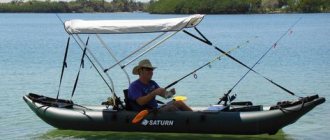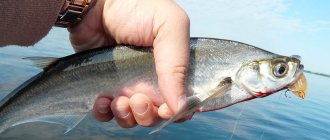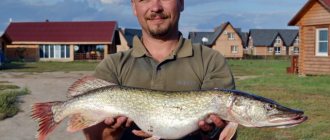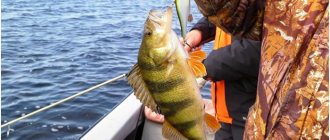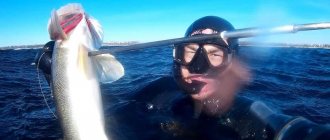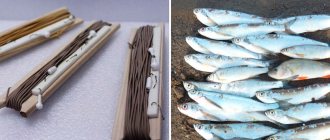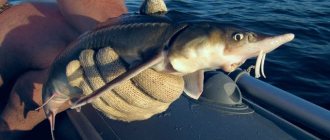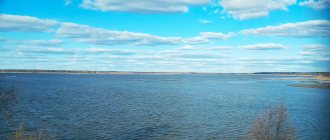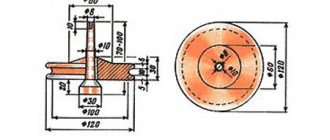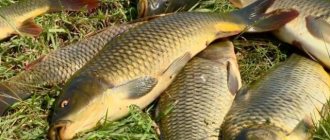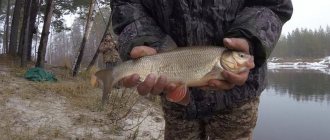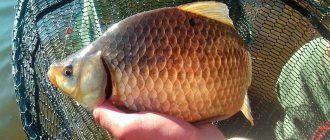Fishing for sabrefish is of considerable interest to both beginners and experienced fishermen. And this is quite understandable - the fish has excellent taste. And the process of catching it itself is an exciting, purely sporting activity. True, finding and catching this individual is actually not so easy, although it is found in large quantities in many rivers, large lakes and reservoirs. The reason for the “intractability” lies in the behavioral characteristics and habits of this fish. Therefore, before you figure out how to catch saberfish, you should get to know it better. So…
About fish
Chekhon is one of the brightest representatives of schooling fish belonging to the carp family. It is very difficult to confuse it with other inhabitants of the underwater world. The elongated body, flat on the sides, and shiny small scales make this fish very similar to the stub of a saber. It is often called that, and also called saber, Czech, bokovnya.
An adult specimen can reach a length of up to 60 cm. The maximum weight of individual specimens is 1 kg, although, as a rule, fish weighing from 200 to 500 g are caught on a hook. A Czech fish that has escaped such a fate can live 10–12 years.
Czech habitats
This fish is found in large rivers that flow into the Black, Azov, Caspian and Baltic seas. There is especially a lot of it in the waters of the Volga-Akhtuba floodplain and the Trekhrechye region.
The Czech fish prefers depth and rapid currents, so it practically does not enter small bodies of water, especially if the bottom is completely covered with algae. During daylight hours, fish move across all horizons and often find themselves at the very edge of the water to hunt for fry or drowning insects. But the saber still does not approach the shore. By nightfall it completely sinks into the depths and only in the morning begins to rise again.
At the end of spring and summer, a school of fish constantly migrates along the river, but does not move far from the once chosen area. In winter, the habitat of the saberfish becomes deep depressions with a slight current, where it tries to stay a meter from the bottom.
Feeder bait and features of baits
Bait for sabrefish must meet special requirements. Since this is not a completely bottom-dwelling fish, the bait should begin to work already when the feeder falls. The mixture should be somewhat under-moistened, so it will begin to wash out already at the moment the feeder touches the water - thus, a trail will remain in the water column to the very bottom, which will force the saber fish to descend into the bottom layers.
Important! When fishing for sabrefish, you shouldn’t stuff the bait into the feeders too much.
Unlike catching bottom fish, for which coarse bait is used to cut off small fish, in the case of sabrefish it is better to do the opposite, to fish with dusty mixtures. Such compositions leave a noticeable mark in the water column, which attracts the target of fishing.
Mostly various insects are used as bait. In action are:
- maggot;
- bloodworm;
- red dung worm;
- larvae of various aquatic insects.
Also, a foam ball is often additionally placed on the hook. Polystyrene foam, having positive buoyancy, slows down the fall of the hook with bait, and already at the bottom of the reservoir it slightly raises the hook, making it more noticeable.
When feeder fishing for sabrefish, after the feeder falls to the bottom, you should not wait too long for a bite; this fish does not like to go down to the bottom, and bites mainly on the fall. Thus, if a bite does not occur in the first couple of minutes after casting, you can safely reel out the rig and re-throw it with a new portion of bait.
Photo 1. Light maggots always float on the current and seduce sabrefish.
When is the best time to catch
The moment of highest activity of sabrefish on Akhtuba is considered to be the period preceding spawning. The fish feeding begins around the second half of April and can last up to 3 weeks. This is the time to go fishing – saberfish will bite on anything! In an effort to gain strength before spawning, she greedily pounces on the offered bait. And if the angler manages to catch the movement of the school, then in a short time it will be possible to catch a dozen excellent specimens.
Something to remember! During spawning, the bite stops completely and begins again only a few weeks after spawning, when the fish return to their favorite places.
In general, saber can be caught from early spring until the river is covered with ice. In summer, it bites better in the morning, evening and at night. With the arrival of autumn, Czech fish begin to be caught closer to lunch, when the daytime temperature reaches its maximum value. In winter, the saberfish does not show much activity, although some fishermen continue to hunt for it, regardless of the season, and at the same time very successfully.
Fishing for saberfish in summer
In summer, saberfish bite in those regions where the heat has not yet reached. A stable bite at this time of year is observed on cloudy and rainy days. It is caught on sand spits, in areas located along vegetation. If you find the boundary between slow and fast currents, you can catch good sabrefish.
How to catch sabrefish in June, July and August
The best gear would be a fishing rod and a rubber band. Using a rubber band, the nozzles are fed to the same place. When fishing with a wire, the maggots and foam will swim slowly until the saber fish notices them and bites them. You can use grasshopper and caddis flies with worms as bait.
They also catch sabrefish using a bombard. This is the same garland as when fishing at sea, only the tackle is attached through a transparent float.
Go to the summer fishing
to get acquainted with fishing for other types of fish during this period.
Saber Spawning
A Czech can reproduce offspring after reaching sexual maturity, which occurs in the 2nd–4th year of its life (depending on living conditions). In most reservoirs, spawning occurs at the same time, when the water warms up to a temperature of 12 °C. In central Russia, sabrefish spawning begins in May or June. However, due to weather, these dates may shift in one direction or another.
The spawning period begins with the rise of fish to the upper reaches of the river. This is where she will spawn. Individuals living in reservoirs and lakes prefer to do this near the mouths of rivers and streams, where the oxygen content in the water will be slightly higher. The depth of the reservoir in spawning areas can reach 6 meters. The spawning process is very rapid and takes from 7 to 10 days.
Age and size
At maturity, this fish reaches a length of 60 cm and weighs up to 1.5 kg (usually 400-600 g). In the third or fifth year of life, after full maturity, the fish spawns from May to June in water with a temperature of 20-23 degrees. The eggs have a non-sticky structure and float freely in the water. Chekhon fry feed mainly on zooplankton, as well as terrestrial insects and their larvae.
Chekhon reaches sexual maturity on average at 3-4 years. In the southern regions, fish become sexually mature earlier - at 2-3 years, and in the northern regions, on the contrary - at 4-5 years. The average body length of a sexually mature specimen of sabrefish is 15-20 centimeters. Also, depending on the area, there are differences in spawning time and method of spawning. So in the southern regions, spawning occurs earlier, around April - May, and the female spawns eggs in portions in two batches. And in the northern regions, spawning occurs in May-June and the eggs are released at the same time. But general similarities still exist. The average water temperature in the reservoir during spawning should reach 15-20 degrees Celsius. Chekhon finds a place for spawning with a gentle current and a depth of about 1.5-6 meters.
The length of saberfish is usually no more than 20-30 cm and weighs 150-200 g. And only a few are up to 50 cm and weigh 800-900 g.
The spawning process is quite quiet. The swept caviar has a sticky shell and a diameter of 1.5 millimeters and settles to the bottom. After fertilization, the eggs swell and increase in volume. Now its diameter is 3-4 millimeters. The fertility of one female is 30-150 thousand eggs, depending on the age, size of the female and the area where the saberfish lives. The eggs ripen in 2-4 days, depending on the ambient temperature, that is, the water in the reservoir. Newly hatched sabrefish larvae have a body length of 5 millimeters, but they grow and develop quickly and initially feed on their yolk. And when they reach ten days of age, they switch to plankton and feed exclusively on it. Until sexual maturity, juvenile sabrefish grow at a rapid pace, and then development and growth slows down significantly. Before spawning, spawning males and females feed little, but after spawning they begin to feed heavily. Feeding mainly occurs in the morning and during the day, but especially hungry ones can go hunting at night.
Finding a place for effective fishing
Finding sites of sabrefish is often very difficult. Moreover, these places may change at different times of the year. Even knowing for sure where sabrefish live, the fisherman has to take into account that in spring and autumn this individual makes mass movements. At this time, it can be found near holes, in shallows, on elevated bottoms, near bushes or flooded tree trunks. After spawning, the saber returns to its former habitats. Where can you catch saberfish at this time? Experienced fishermen advise looking for it:
- close to deep holes;
- on the border of currents;
- in places of rifts and sand spits;
- in large bays that are not overgrown with algae;
- in deep-sea creeks.
The saberfish is caught mainly in the upper and middle layers of water. However, this does not mean at all that it cannot be caught using bottom or other gear intended for other types of river inhabitants. The Czech woman is very curious, she is interested in any object that has fallen into the water. Sometimes she manages to grab the bait before it reaches the bottom. Professionals know: if a bite occurs, there is no need to leave this area; here you can count on a very effective catch.
See also:
- Bream fishing in spring
- How to tie fishing knots
- How to properly arrange goose decoys when hunting
The Czech fish does not like to approach the shore, so long casts are required to catch it. There is no point in hunting for saber fish at night: it hides or sinks to depth.
Attention! You can detect where this type of fish gathers by looking at the seagulls circling above the water. There will be no strong splashes in such an area; only light ripples are possible.
Fishing for sabrefish
Catching sabrefish The most optimal time for catching sabrefish is spring and autumn - the time of its migration, when the fish gather in huge schools.
At the same time, the saberfish begins to zhor - the most intensive feeding. In the spring it prepares for spawning, and in the fall for winter. This is a great sign for anglers. As for the time of day, the best option is morning and daytime, since saberfish lead a predominantly diurnal lifestyle and practically do not feed at night. So it is not possible to catch saberfish at night. For fishing, it is better to choose deep and spacious places in the reservoir, since this fish can rarely be found in cramped and shallow places, as well as with dense vegetation. You should also pay attention to the condition of the water and bottom. The bottom should be sandy and the water clean. The baits used for catching sabrefish vary depending on the season of the year. The saber fish bites best on worms and maggots, but in summer you can use insects such as flies, dragonflies, and grasshoppers and catch them on the surface of the water. In the fall, it is good to catch other fish with juveniles, and you can also deceive sabrefish with pieces of polystyrene or foam rubber, which the fish will mistake for a worm or larva. Some fishermen use attractive spoons and wobblers as bait, and not without success.
For greater interest and excitement, use such gear as a float rod, fly fishing tackle, elastic band and spinning rod. When choosing gear, you should pay attention to its quality and equipment. So the length of the rod should be 4-6 meters, the diameter of the fishing line should be 0.2 millimeters. For a leash, the fishing line used is thinner - 0.15-0.17 millimeters. The choice of hook depends on the size and quality of the bait, but most often they use No. 3-5.
The sabrefish bites quickly and confidently swallows the bait. When biting, the float abruptly goes under the water and to the side. Catching saberfish is not difficult, but you still need to be careful and careful. They land the fish carefully and slowly, gradually pulling the line towards themselves. The fish is fished on the surface of the water, and not lifted above the water, as it can jump off (siberian fish have very thin lips, and they can tear under the weight of the fish). If everything is done carefully and without unnecessary noise and fuss, then in the same place you can catch a sufficient number of fish from one school. But if you startle the flock, you will have to move to another place. Also, you should not be zealous and fish for a long time in one place if there is no bite for a long time. The flock moves quickly, so the best option would be to catch sabrefish from a boat. Only for this you will have to use oars, and not a motor, which can scare away all the fish. When catching sabrefish, a little bait won’t hurt, although you can do without it.
Fishing Features
You can go Czech all year round. But since its activity directly depends on the season, fishing will have its own characteristics.
Winter
Winter fishing for saber fish is a rather difficult process, but very interesting, since not everyone is able to get the desired prey at this time of year. The problem is that with the onset of cold weather, the Czech fish goes into the pits, where it remains until the beginning of spring. At this time, she is very sedentary and does not have a special appetite. To find it, you will have to try hard and examine more than one section of the reservoir. The most promising in this regard are the turns of the river bed, where there are holes and changes in depth, as well as places where the current borders on standing water.
The main equipment at this time of year is the so-called sabrefish garland, which is very easy to install yourself. At its core, it consists of several short leashes with jigs or hooks tied to the main fishing line.
The equipment is attached to a regular fishing rod, which is used by jig fishermen. Both a classic balalaika and a fishing rod with a foam handle are suitable for this purpose. As bait, you can use dung worms, maggots, bloodworms, dough, lard, artificial baits - individually, or better in the form of a sandwich.
There is no special technique for this method of catching sabrefish from ice. The tackle is lowered into the hole, and the angler waits for a bite. If necessary, the saber can be lured by playing, making soft nods with a slight amplitude.
There is nothing complicated in the process; knowing at least in general terms how to catch saberfish in winter, you can easily count on an excellent catch. The main thing is to guess the location of the hole.
Spring
Spring is the best time when saberfish begin to bite. During this period, the fish reacts very violently to any bait, so you can catch it with a variety of gear: elastic, mast rod, spinning rod, feeder, bombard. The reason for this activity is the spawning run, during which Czech fish can be caught in huge quantities and without much effort. Unfortunately, this crazy bite will not last long, no more than 2-3 weeks, then it fades away and the saberfish begins to take a break.
Summer
In summer, fish are caught mainly in those regions where the heat has not yet reached. Moreover, it bites most actively on rainy or cloudy days. The best places to catch saberfish at this time are sand spits and areas located along thickets of vegetation. If you manage to find the boundary between the currents, you can count on a good trophy.
The most suitable gear at this time of year would be a rubber band and a fishing rod for live fishing. You can use worms and grasshoppers as bait.
Autumn
In autumn, this individual prefers to hunt in the water column; sometimes it can feed at the very bottom. They catch it in September, October and early November. If it is not necessary to feed saberfish in spring and summer, then in the fall you should not refuse bait. It is best to fish on a feeder. As a bait you can use maggots, worms, and at a later time - bloodworms.
In the fall, the Czech fish bites sharply, but not as wildly as in the spring, so when catching it during this period, it is very important to feel the bite in time.
In the upper layers of water
Of course, it is more convenient to use a spinning rod to catch sabrefish from a boat . However, if you have sufficiently long-range gear, you can achieve success in fishing from the shore. Using a motor boat in permitted areas allows you to quickly find promising areas and easily examine them. Chekhon often stays at a decent distance from the shore. But it happens that sabrefish feeding at the surface quickly moves near the coastline up or downstream. In this case, it may be advisable to go ashore so as not to make noise when anchoring. Large saberfish are very careful and quickly notice the fisherman, so casting the bait should be done while sitting or hiding behind the shore cover. You also need to move along the shore, especially an open one, secretly. But even if the angler is well camouflaged, a school of saberfish quickly gets used to the same offered bait and stops responding to it. In this case, after several idle runs through the feeding area, you need to change one type of bait to another. To do this, the bait must be attached to the fishing line using a convenient carabiner connected to the fishing line with a small, reliable swivel. But changing the bait does not always help. It happens that you need to give the place a rest for at least half an hour.
On the Don, Dnieper, as well as in the lower reaches of the Volga, “cauldrons” of sabrefish can still be found in October by gulls diving near the water. When approaching such a place, you need to go upstream and, having turned off the engine in advance, float to the place of the “battle”. They anchor so that the fish is between the shore and you - in this case the fishing radius increases. The anchor rope is taken long enough so that it can be released or pulled up to move behind the moving school.
Small spinners such as BLU FOX and MEPPS weighing 2.5–4.5 g are very suitable for horseback fishing At the same time, the high resistance of the core shell allows the spoon to be driven close to the surface of the water during fast retrieval. Fishing with small (from 3.5 to 14 g) castmasters of yellow or white color (as well as with a green color-reflective sticker) is no less productive, especially in combination with a medium-sized wabik, which is installed above the spoon at 25–40 cm. The wabik is attached to a triple a swivel mounted on the main line (), or to a 5-7 cm leash. The second option improves the catchability of the additional bait, but the tackle gets tangled more often and gets snagged more often when fishing in difficult places. It should be said that if fishing takes place near washed-out trees or snags, you should always make a choice in favor of equipment that does not have any additions, and often with only one bait; hooks must be protected against snagging. The color of wabik is light green, beige, whitish, red-white, yellow-gray. The treble hook for this bait, as well as for others, should be taken No. 8-10. It should be made of thin wire. Tees are well suited for this fishing.
Spinning equipment with a wabik on a triple swivel
If the saberfish suddenly stops taking the proven “spinner” with one petal, it must be replaced with a spinner with two petals or, after removing the tee, connect two spinners of size 0.00 or 000 using a winding ring (). The saber fish perceives water vibrations produced by the bait through the lateral line. The double petal vibrates more strongly, and the saberfish, sensing the vibrations of the water, reacts more readily to the bait.
Tandem of two spinners : 1 – swivel; 2 – carbine; 3 – winding ring
For catching sabrefish, such not too wide oscillating spoons are suitable, which oscillate simultaneously with wagging from side to side. In the Lower Volga, I successfully used a homemade spinner of an elongated rhombic shape with a curve along the profile (white). At times, LITTL CLEO from ACME weighing 4.65 g also worked well.
In combination with any types of spinners, you can use a herringbone with dry or wet flies, which, when deployed in water, can resemble a fry (). Tying flies directly to the main line is ineffective, since the fish are then poorly detected. True, there is a way when the flies are installed one after another without leashes. In this case, they need to be crocheted on hooks with an elongated, bent shank.
Tandem with flies for catching sabrefish
Can be used in combination with tandem spinners of the smallest white or transparent greenish twisters with sparkles. However, it should be remembered that working in tandems is quite problematic due to the fact that they get confused when fishing for lively sabrefish, although they often bring success at a time when sabrefish do not notice a lone bait. The twister is put on a single hook No. 4–6 with an elongated shank and an additional barb on it. The hook with a twister is attached to a loop made on the main fishing line (). Thus, the hook and the twister are movable, which is important for additional play with uneven wiring and for better grip of the hook.
Tandem of a rotating spoon and twister
Another option is when twisters are attached to leashes. According to some anglers, this improves the play of twisters with uneven wiring, which is especially often practiced when fishing in the middle and lower layers of water.
For any type of fishing for sabrefish with a spinning rod, you need to take a “stick” of the most minimal test, unless you are fishing with small baits with a “locomotive” that give a lot of resistance. For long casts, it is most convenient to use a fast or ultra-fast action rod with a length of about 3 m or a little more than 3 m. However, when fishing from a boat, even on large rivers, a spinning rod with a length of 2.5–2.7 m was always enough for me. When casting baits equipped with a tee, it is advisable to use a “braid”. Its diameter, taking into account the weight of the sabrefish and the lightness of the baits used, should not exceed 0.1 mm. If you have a bait with a single hook in your rig, it is better to take monofilament with a diameter of 0.2–0.25 mm: it absorbs the jerks of the fish - otherwise the hook often comes out of the torn lip. However, taking into account that asp often feeds mixed with sabrefish, sometimes they go to significant strengthening of the equipment.
Baits and lures
Saber fish are quite omnivorous, but their main preference is for bait of animal origin. You can catch it on:
- dung worms;
- maggots;
- bloodworm;
- grasshoppers;
- flies;
- butterflies;
- dragonflies;
- os.
This individual is especially partial to maggots. This bait is the best of all that is used to catch saberfish. As a rule, from 2 to 5 fly larvae are attached to one hook. It is best if they are of different colors, for example, white and red. A combination of maggot and bloodworms also gives a good result.
Experienced fishermen often add a foam ball to the bait. This design will be most appropriate if the bottom of the reservoir is muddy and the nozzle can easily get lost.
In addition to maggots, in spring you can use other baits - dung worms, caddis flies, bloodworms. In summer, during the season of mass appearance of insects, fish can be caught on them.
Large individuals bite well on fry, but you need to choose small live bait. Artificial baits for fishing will also come in handy in this case.
Features by fish species
Chekhon
In the summer, when the sabrefish are fattening, you really want to catch it with a spinning rod, but it practically ignores ordinary spoons. This is where the bombard will come to your aid.
The bait (it is better to use a worm) is thrown directly into the cauldron of fattening fish. When fishing this way, the retrieve is slow, with short pulls. The result should pleasantly surprise you: in 10 minutes of fishing you can catch half a kilogram of sabrefish.
The best baits for catching sabrefish using a bombard include:
- maggot;
- dung worm;
- white twisters;
- pearl barley and mastyrka;
During long casts, the pearl barley can fly off the hook, so it is safer to use a mast for these purposes. In addition, it is worth noting that plant baits are still less effective than animal baits when catching saberfish.
The best time to catch asp is summer. In summer, this type of fish bites best at dawn and in the evening, when the heat subsides.
In autumn, the peak of asp activity occurs in the afternoon. It is very difficult to catch in the fall, but if you do catch one, chances are it will be a sizeable specimen.
The method of catching an asp with a bombard is quite simple: throw the tackle behind the cauldron of the fattening predator or to the side of it. As a rule, the bite occurs in the intervals between stretches.
Chub
L Minnow 44 It is possible to catch bombard and chub with the tackle. The gear has the following structure:
- a rod, 2.5-3 m long when fishing in open areas and up to 2.5 meters when fishing on a small river;
- spinning reel, size 2000, main braided line, 0.12 mm thick,
- leash line, diameter 0.15-0.18 mm, fluorocarbon
- hooks No. 8-12.
When you are fishing for a cockchafer using gear with sbirulina, remember that if the line is very tight or moves sharply to the side, this means a bite. At this moment, there is no need to waste time - make a good hook in order to properly hook the biting fish.
If you fish with artificial baits: wobblers or spinners, then keep in mind that the main, most catchy types of fishing in this case are twitching and various types of uniform fishing.
Our rating of the best wobblers for catching chub with a bombard includes:
- Yo Zuri Quiet Wave Flat;
- L Minnow 44;
- Smith Camion SR;
- Griffon Zero;
- Tsuribito Baby Crank 35 SR;
With the beginning of the flight of insects at the junction of summer and spring, the ide feast begins. During this period of time he is more active than ever. At this time, it is better to catch ide with a bombard.
This equipment is so effective when fishing for ide that if you don’t catch an ide with it, it will mean that there is simply no ide in this body of water, or it is not very active.
Do not forget also that you need to look for ide where a slow current intersects with a fast one, trees hanging over the water, windows in aquatic vegetation, in short, places where a predator can hide for an ambush.
Bleak
Bombarda is a fairly versatile tackle. Therefore, you should not be surprised that you can also catch small fish, such as bleak, with it.
This fish needs to be fed. Use an inexpensive slingshot to send clumps of bait away from the shore to attract large bleak and other critters. The bait should be floating on the surface.
It has been noticed that on sunny days or days of cold weather the bleak sinks closer to the bottom. But it is worth remembering that usually this type of fish stays at a depth of up to 1 m from the surface.
It would also be useful to use various attractants. When the bait is treated with a flavoring agent, the fish bite more confidently and more often. Use garlic juice, for example.
We suggest you read: Catching perch with a float rod
When the time comes when the fish are reluctant to take the bait, and the time for fishing is limited to 2-3 hours, the best way out of the situation is to catch perch with a bombard.
Perch bites readily in the fall. The best time is early in the morning at dawn and shortly before sunset and until darkness. At night the perch does not bite.
Twisters, small spoons and vibrotails can be used as bait. As you can see, these are all imitations of sick fish, so small fish can also be used as bait. As for natural baits, I would like to highlight the worm among them.
Groundbait and its components
You can catch saber without bait. However, for sabrefish fishing to be truly effective, it is better to use all available methods.
Feeding should be done in small portions, because the main goal of the fisherman is to keep the flock without saturating it. You should not use only sunflower cake or porridge for this purpose: in this case, only one small thing will fall on the hook. As a basis for bait, you can choose any basic compositions available in stores. When preparing the mixture, it is necessary to add to it the bait on which fishing is carried out, and what the saber fish bites best on - chopped worms or maggots.
Throwing bait in bulk is useless: the current will wash it away in a couple of minutes. As a container for the mixture, you can use a special jar made of perforated sheets, a mesh bag, or an old nylon stocking.
What to fish with
Chekhon is undemanding when it comes to choosing bait. The main thing is that she is an animal. But still, among the menu offered to her, she makes a choice in favor of maggots. He is her delicacy
When fishing, it is important to place not just one on the hook, but several. Even better if they are different colors
In fishing stores you can now buy maggots of all colors of the rainbow
Even if among the bait of the same color there is at least one red one, this will already attract the attention of the fish. Can use worm, fly, butterfly and other baits
You can add foam balls and even red thread to the bait. First he is baited, then the bait itself.
It will be very good to bite saberfish on live bait. True, the fish used as bait should not be too large. After all, even very large specimens of sabrefish are still not pike or pike perch.
Tactics and fishing techniques
The success of fishing directly depends on the correct choice of gear. Equally important are the ability to use it, the technique and tactics of fishing, which have to be chosen in each specific case.
To the feeder
Once a fishing spot has been chosen, you can proceed to feeding it. To do this, you should make 5–10 casts without a leash, with one feeder filled with a mixture prepared in advance. To attract fish faster, you can take a slightly larger container. After several casts, the feeder should be changed and a leash with a hook and bait should be added to it. Its length can be up to 2 meters - and this is the main feature of the feeder. Of course, throwing such a tackle onto a sabrefish will be somewhat more difficult, but the result of the efforts will not be long in coming.
When fishing with traditional baits, the bite can occur almost instantly as the bait slowly moves towards the bottom on a long leader. However, fishermen came up with the idea of putting a foam ball on the hook, which allows the maggot or worm to remain in half-water all the time. This kind of gear is truly killer! It allows you to catch sabre, without being distracted by other species, for example, silver bream or roach. But the main advantage is the ability to use feeder equipment for catching sabrefish in the current, and the video below very eloquently confirms this.
The consistency of the bait should be chosen so that it stays in the feeder for no more than 5 minutes. After this time, the tackle must be checked. If there are no bites for a very long time, most likely the fishing place was chosen poorly.
https://youtu.be/6YWWXkVHlNM
On the float
Taking into account the peculiarities of the behavior of the Czech fish, it is better to catch her in the retrieve. In this case, the tackle must be cast and released with the flow. The reel arc should be folded back so that the line can be released freely. But you need to keep your finger ready so that when you bite, you can instantly clamp the monofilament and make a hook.
In traditional float fishing, the bait must be constantly in motion. Otherwise, the saber simply may not respond to the bait.
For spinning
When fishing with a spinning rod, experienced fishermen advise using stepped fishing. You can perform it immediately after the bait touches the bottom. There is no need to make any additional movements with the rod; wiring is carried out only by rotating the reel.
Lures made of edible rubber are ideal as bait, although Czech fish are also excellently caught using a wobbler or twister.
Recently, ultralight spinning rods have been of particular interest to anglers. Despite their apparent fragility, they can withstand quite heavy loads, so they allow you to catch a saber without any effort.
To the bombard
This is one of the new methods of spinning equipment for sabrefish, invented in Italy. Bombarda, or sbirulino, is a kind of heavy float that serves as a sinker for long casts.
Despite the apparent intricacy, this tackle is quite simple; its installation on a saber cap can be done in a short period of time. There may be several assembly methods. The most common is the classic version. To carry out such installation, you must:
- wind the main line onto the fishing rod reel;
- put a bombard on it and secure it with a rubber shock absorber;
- tie a swivel to the end of the main line;
- attach a leash with bait to his ear.
In this case, the bombard will be located above the bait. In other installation options, it can be attached to the very end of the main fishing line, and the leash – above it.
After the bombard is assembled, you can move on to choosing flies for catching saberfish. Since the favorite delicacy of an adult saber is fry and insects floating on the water, the baits should look accordingly. To achieve better results, you can hang several flies at the same time.
Fishing with this type of gear is very easy. The wiring in this case will consist of a series of leisurely pull-ups that will help imitate the movements of an insect that has fallen into the water and is trying to take off.
Catching fish from the bottom
This method of catching sabrefish is practiced in cases when schools of fish go to depth, for example, in the evening or during the summer cold spell. A fishing rod with a blind rig is quite suitable for this purpose. The length of the rod should be at least 6–8 meters. The shipment is selected depending on the flow speed: in a fast flow it can consist of several groups of small sinkers, in a slow flow it can consist of pellets decreasing downwards.
As a nozzle for bottom wiring, a dung worm, a bunch of maggots, or the larvae of some insect living in the water are used. You should not refuse bait either.
Fishing with an elastic band
Before spawning, Czech fish can be caught using almost any tackle that has a hook. But it is best caught on a donkey with a rubber shock absorber, popularly called an “elastic band.” Its main advantage is its simplicity and ease of use. The “elastic band” allows you to reel in your catch and change bait without pulling the main gear out of the water. You just have to transport it to the right place using a boat. Although, with some skill, the rubber band can easily be thrown from the shore.
After delivering the tackle to its place, you need to tighten it a little so that the fishing line is in constant tension, and secure it to a peg. In order to notice the bite in time, you can hang a bell on the monofilament. The bait is placed in several pieces, depending on the size of the hook on the sabrefish.
To attract the attention of the fish, the line should be twitched periodically. When biting, it is necessary to hook. To do this, you need to pull the elastic band towards you with a sharp movement, then release it and only then smoothly pull it to the shore.
We can talk about what to catch and how to catch saberfish for a very long time. The main thing that a beginner must understand is that there is nothing complicated in this process. It is enough to follow the simplest recommendations of experienced fishermen - and the coveted trophy will not take long to arrive!
Where to fish
Catching sabrefish in the Lower Volga and Akhtuba is simplified by the fact that schools of fish are easy to identify by the concentration of seagulls above the water. This means that below the saberfish is hunting for fry.
The fish prefers deep places on the river not far from the shore. The current likes it slow, with whirlpools. You will not find saberfish in a strong or, on the contrary, very weak current. But some kind of obstacle to the flow on or below the water (at least three meters deep) is an indicator that you will find saberfish there. She will give herself away with regular bursts. If you find such a place, you will have a catch.
